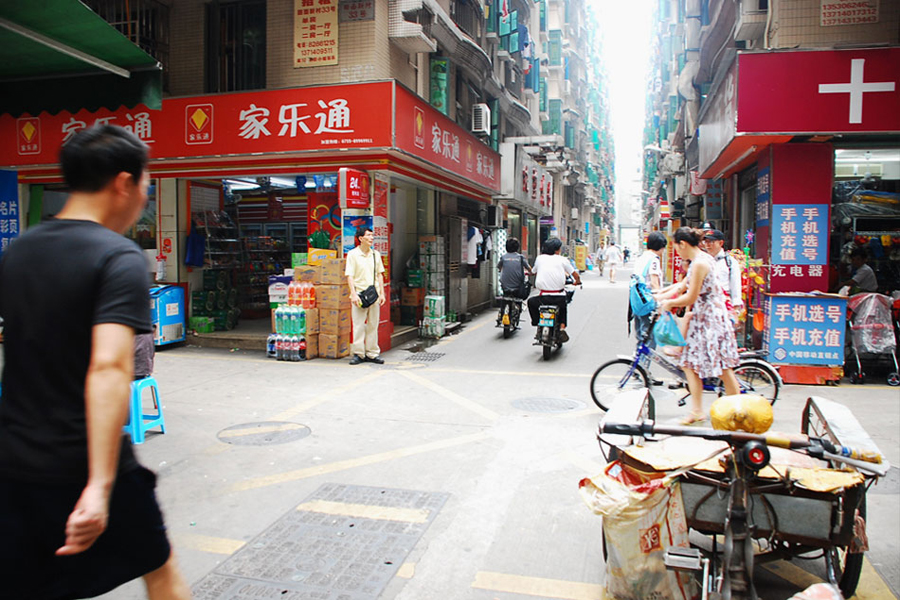(01 Great Migration)

The Rural, The Urban and The Great Migration: China's Migrating Peasant and the Rise of the Urban Village
What began as research into the "urban villages" (informal settlements) in China's peri-urban regions, became a larger study into the country's transitioning politico-economic structures and the mechanisms that led to its development. Of particular focus is the trajectory of the mass of rural peasants who now live in these settlements, and the systemic marginalization they face (2011). The following are excerpts from this paper. View the full version here.
The year 1978 marked the turning point in China’s history, when Deng Xiaoping announced the need for economic reform; from this moment on, the nation has set unprecedented global records in such areas as rate of urban development and rate and scale of rural-to-urban human migration. In its singular drive for economic growth and development, which this country has undoubtedly managed to achieve, China has simultaneously undermined and undeveloped it’s social aspects and human rights. It is an inverse relationship that has had its most brutal effects on the rural, peasant population. It is their plight that will be followed here, as well as an examination into the idea of marginalization as it relates to this population, and discussions on possible forces and mechanisms by which this has occurred.





Rural-urban disparity and growing marginalization
Rural residents who have once made the move to urban areas as temporary residents, face a cycle of institutionalized marginalization in contrast to the more fortuitous conditions of peri-urban villagers as well as their urban counterparts. The term marginalization is used to emphasize a downwards social trajectory rather than just current static living standards; it is defined by Wu and Webster (2010) as the broad social processes whereby particular social groups obtain lower status, and are becoming more unequal, often involving external and structural forces that influence the social status of a group of people. It is often more specifically used in the context of post-industrial western economies in relation with changes in the organized labour in production, and is usually accompanied by the retreat of the welfare state with shifts towards liberalized, cost-saving market economies (Mingione, 1996; Wacquant, 2008). In China, this phenomenon can be characteristically observed as it made its socio-economic transition from an internal market structure towards a liberalized global market structure, while maintaining its central state powers. Revisiting the story of the changing conditions of the rural peasants in the agrarian sector, these structural shifts, parallel with the improvements in agricultural productivity, certainly contributed to the downward trajectory of the peasant labour force (Fan, 2002). With the loss of social provisions, and little opportunity remaining in the rural sector, this labour force began the great migration to cities as low-cost wage labourers (primarily in construction and industrial sectors) with the status of temporary ‘floating’ residents, as a means for the party to continue to keep this population from gaining access to the city’s social resources.
Accompanying this economic shift was the privatization of these resources, specifically for this population, which not only further contributed to their condition of marginalization, but also suggests a consciously planned means of social repression, and as Harvey (2005) argues, may be considered as a deliberate systemic reconstitution of capitalist class power. Innumerable migrant workers have lived and contributed to the growth of urban centres for upwards of 20 years to this day, yet have unfailingly remained ‘temporary’ residents, living in the shadows of the cities they cultivated. This classification will continue to strip them of the basic welfare entitlements—rights to education, health care and housing—known to existing urban residents and those which are newly acquired by peri-urban villagers (Fan, 2002; Fu & Ren, 2010). They furthermore remain unprotected under labour laws, allowing many unscrupulous owners and capitalists to accumulate revenue through the exploitation of labour and unpaid labour (Wu & Webster, 2010; Hussain & Wang, 2010; Harvey, 2005). It should come to no surprise then, that under all aforementioned socio-political and economic conditions, this labour force will be unable to sustain itself in the urban economy; these workers will be unable to reproduce their own labour on their unsustainable incomes, and lack of health care and education provisions for their children (Webster & Zhao, 2010). This should be cause for great concern to a nation whose economic growth and stability has been dependent on this massive resource.
Text, Images, Layout by Olivia Cheung
